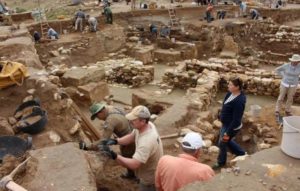

Jerry Pattengale – April 22, 2022
(RNS) — What everyone agrees on is that something unusual happened at Tall el-Hammam, an ancient settlement near the Dead Sea.
In a layer of ancient earth, archaeologists claim to have found evidence of an apocalyptic event: Melted rooftops. Disintegrated pottery. Unusual patterns in the rock formations that can be associated with intense heat. For another three to six centuries after 1650 B.C., the settlement’s 100 acres lay fallow.
But when Steven Collins, the principal archaeologist at Tall el-Hammam, considered the scientists’ evidence in an article that ran last year in the respected scientific journal Nature, he claimed that the incineration matched with the place and timing of the biblical account of Sodom and Gomorrah. This brought down on himself what in academic circles might be called hellfire.
That story of Sodom and its sister city Gomorrah is one of the Bible’s best-known stories. Abraham bargains with God to spare Sodom — even then synonymous with sin — to save its few righteous residents. The Lord was having none of it. “Then the LORD rained down burning sulfur on Sodom and Gomorrah,” the Book of Genesis says. Abraham looks back and sees “dense smoke rising from the land, like smoke from a furnace.”
On the face of it, you don’t need to be a rocket scientist to see possible connections between Tell el-Hammam. But in a real sense you do.
Led by Collins, dean of the College of Archaeology at Trinity Southwest University, 21 experts from 19 research institutions weighed in on Tall el-Hammam’s remains, concluding that the nature of the destruction suggested a massive airburst or comet.